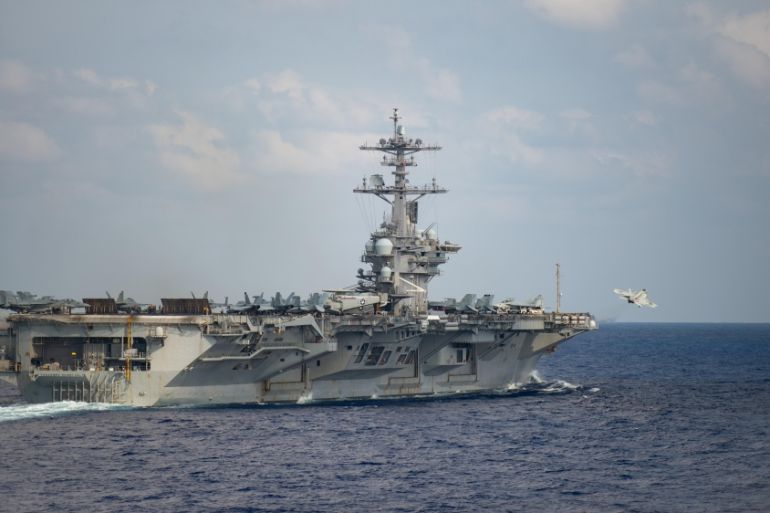Nearly 3,000 sailors to leave aircraft carrier amid outbreak
About 100 of the nearly 5,000 sailors assigned to the USS Theodore Roosevelt have tested positive for coronavirus.

Nearly 3,000 sailors on board a United States aircraft carrier where coronavirus has spread will be taken off the ship by Friday, Navy officials said as they struggle to quarantine crew members in the face of an outbreak.
So far, fewer than 100 of the nearly 5,000 sailors assigned to the USS Theodore Roosevelt, now docked in Guam, have tested positive for the virus, but the Navy is moving sailors into various facilities and probably will begin using hotel rooms in the coming days.
Keep reading
list of 2 itemsWhat happens if you catch the new coronavirus?
Navy leaders are talking with government officials in the US territory to identify rooms for the crew members.
Acting Navy Secretary Thomas Modly, however, made it clear on Wednesday that while several thousand will leave the ship, other sailors will remain on board to continue to protect the ship and run critical systems.
“We cannot and will not remove all sailors from the ship,” Modly told reporters. He said officials will send as many sailors off the ship as possible while still maintaining safety. He said about 1,000 have gone ashore so far, and that number will grow to at least 2,700 in the coming days.
|
|
Modly and Admiral Michael Gilday, chief of naval operations, declined to say how long the ship will be sidelined. But if crew members are required to be quarantined for 14 days, on a rotational basis, the Roosevelt could be out of duty for weeks.
The Navy leaders said they are trying to track down any sailors who came in contact with those now ill and place them in quarantine.
They said almost 1,300 sailors have been tested, and as of Wednesday, nearly 600 of those tests came back negative. Officials are awaiting more results and more testing.
At this point, no sailors with the virus have been hospitalised.
‘Necessary risk’
Navy Captain Brett Crozier, the carrier’s commander, raised warnings this week in a memo to his leaders.
He said the ship was facing a growing coronavirus outbreak and asked permission to isolate the bulk of his crew members on shore, an extraordinary move to take an aircraft carrier out of duty in an effort to save lives.
In a memo to Navy leaders over the weekend, Crozier said the spread of the disease was accelerating and removing all but 10 percent of the crew would be a “necessary risk” in order to stop the spread of the virus.
Navy leaders faced persistent questions about the origin of the virus on the ship, but said it may be impossible to identify where it started.
The Roosevelt made a port call in Vietnam last month. Modly said the stop, where thousands of sailors likely went off the ship into Danang, was done when there were fewer than 20 cases of the illness in Hanoi and sailors were screened when they returned to the vessel.
He said two sailors fell ill near the end of the required 14-day period between port calls, and they were flown off the ship. As the days went by, however, the problem worsened.